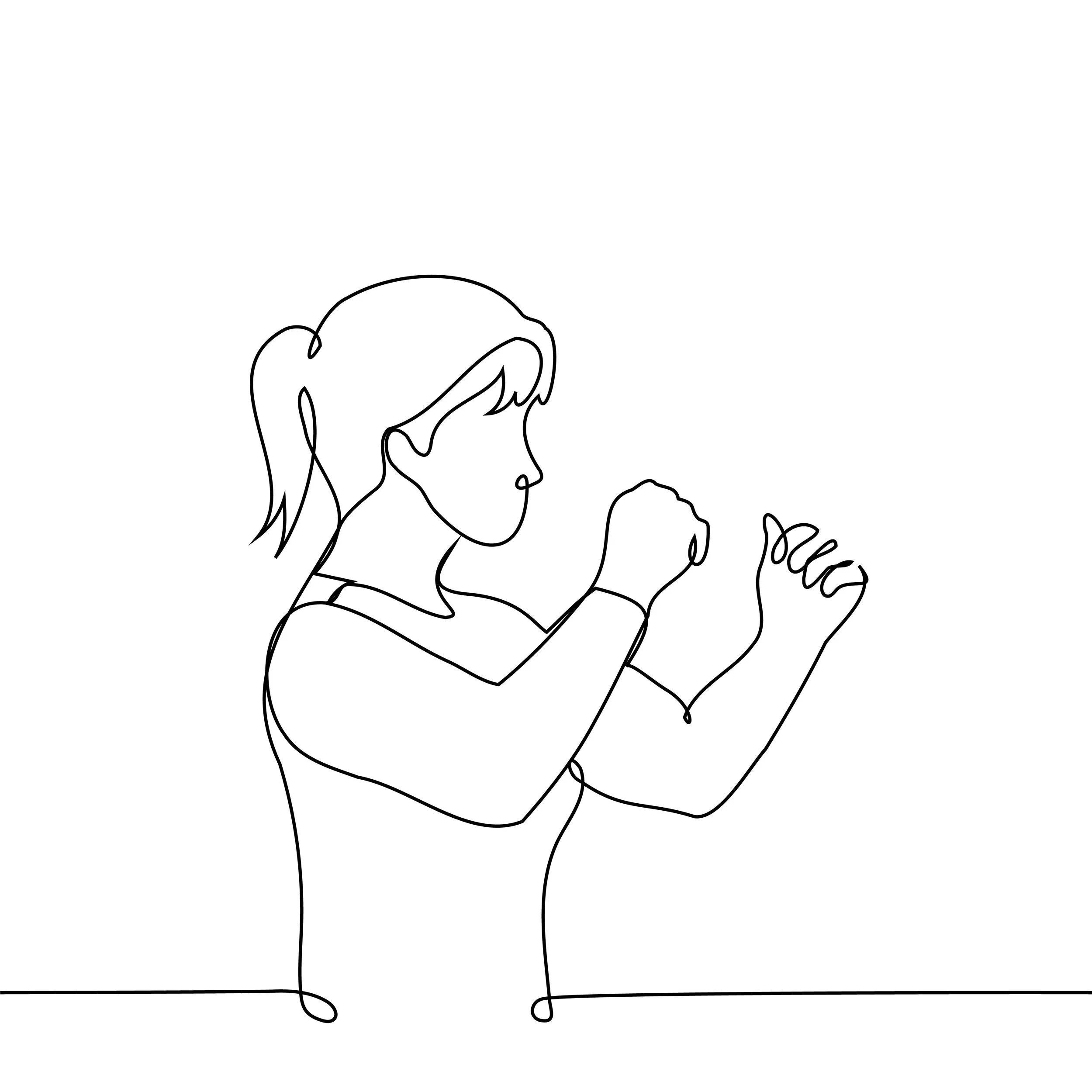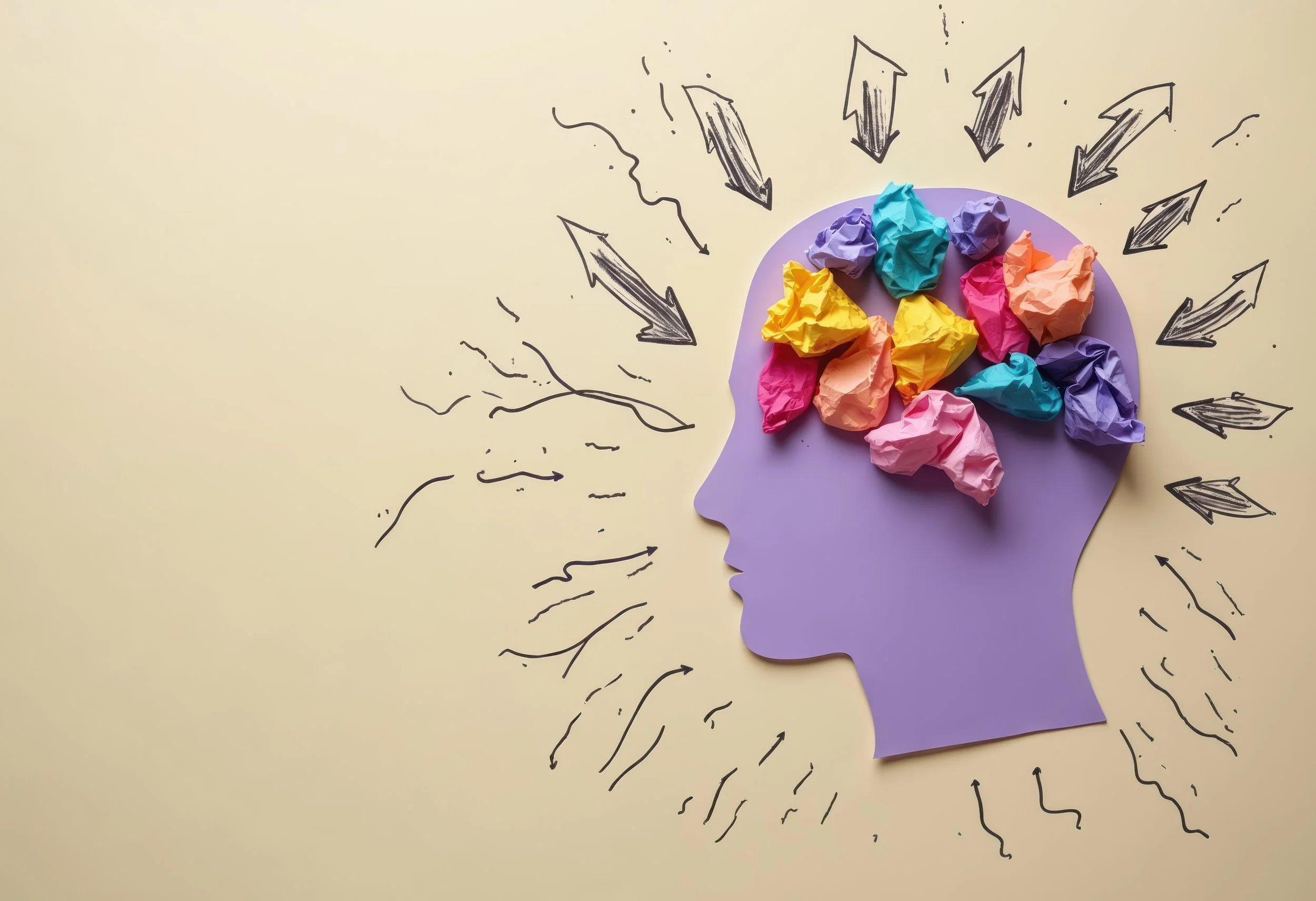From Fight-Flight-Freeze to Calm
Picture this: it’s a chilly winter evening, and I’m all snuggled up in bed under my favorite heating blanket, feeling cozy and safe. Life is good, and all I really need to do is drift off to sleep. My husband is next to me, scrolling through a seemingly endless sea of short videos. You know the drill.
As is his habit with particularly interesting finds, he hands me his phone, insisting I check out a video he’s excited about. The screen lights up, revealing a shadowy park scene filmed at night. A creaky swing is moving back and forth, almost as if someone’s having the time of their life—except there’s no one on it.
Curiosity piqued, I lean in, ready to crack the mystery. And then, BAM! Out of nowhere, a creepy, half-human face pops up, screeching like a banshee. Much to my husband’s amusement, my body jolts. My heart races, my breath quickens, and in what felt like mere seconds, I went from cozy and relaxed to ready to fight or flee. Talk about a mood swing!
Here’s the jump scare video, if you’re brave enough to watch it!
This startling experience serves as a vivid example of how our bodies instinctively respond to fear, leading us to react in ways we might not fully understand. This is where Polyvagal Theory, developed by Dr. Stephen Porges, comes into play. This fascinating theory explains how our bodies react to perceived threats and illustrates how our nervous system shapes our feelings, behaviors, emotional well-being, relationships, and our ability to navigate stress in everyday life.
According to polyvagal theory, our autonomic nervous system is divided into three main states: Ventral Vagal, Sympathetic, and Dorsal Vagal.
Relaxed State (Ventral Vagal): Think calm and connected, like when I’m cozied up under my heating blanket. In this state, we feel safe and can engage fully with others, fostering healthy social connections and open communication. This state allows us to be present in relationships, enhancing our ability to express emotions and build trust.
Mobilized State (Sympathetic): This kicks in during moments of danger—hello, fight or flight! In this state, our body prepares to respond to perceived threats by increasing heart rate and releasing stress hormones. While this response can be essential for survival in acute situations, it may also cause anxiety and stress if activated too frequently or inappropriately, making it difficult to relax or engage with others effectively.
Immobilized State (Dorsal Vagal): This is where we freeze, often feeling overwhelmed or hopeless. In this state, individuals may also engage in the FAWN response, prioritizing others' needs over their own as a way to cope with perceived threats. This can lead to emotional numbness and a lack of agency, making it difficult to assert oneself in relationships.
Let’s circle back to the jump scare video. At the sight of the half-human face, my body instantly switched to sympathetic mode, as if it was shouting, “Danger! Run!” This protective response is hardwired into our nervous system, and keeps us safe when threats arise. These instinctual responses play a vital role in our survival during real dangers; however, after experiencing trauma, our bodies can start to identify reminders of those past threats as if they are current dangers, even when they are not. This can leave us feeling trapped, as our nervous system remains on high alert, making it challenging to feel safe and relaxed in everyday situations.
This inability to shift back to a state of calm can have profound consequences, especially when we consider the long-term effects of trauma. As outlined by Pete Walker and others, these unresolved experiences can significantly influence our behavior and relationships. Understanding these impacts is crucial, as they often manifest in ways that complicate our interactions and emotional well-being. When a person's autonomic nervous system struggles to maintain a relaxed state, has difficulty returning to calm after perceiving danger, or is easily triggered into fight-flight-freeze, it can lead to unresolved trauma.
Unresolved trauma can significantly impact various aspects of life. Here’s a summary of some key effects it can have, as outlined by Pete Walker:
Trust Issues: Individuals may struggle to trust others due to past betrayals or abandonment, leading to difficulty forming close relationships.
Emotional Dysregulation: Trauma can result in challenges managing emotions, leading to intense reactions, anxiety, or emotional numbness.
Attachment Styles: People may develop insecure attachment styles, such as anxious or avoidant patterns, affecting how they connect with partners, friends, and family.
People-Pleasing (FAWN): Those who adopt the FAWN response may prioritize others' needs over their own, leading to feelings of resentment or being taken advantage of in relationships.
Conflict Avoidance: A tendency to avoid conflict can result in unresolved issues and unspoken grievances, creating tension in relationships.
Self-Esteem Issues: Trauma often impacts self-worth, leading individuals to feel unworthy of love or success, which can hinder personal and professional relationships.
Reenactment of Trauma: Some may unconsciously seek out relationships or situations that mirror past trauma, perpetuating a cycle of unhealthy dynamics.
Difficulty with Intimacy: Fear of vulnerability can make it hard to engage in intimate relationships, leading to isolation or superficial connections.
Compulsive Behaviors: Individuals may develop coping mechanisms, such as substance abuse or compulsive behaviors, to manage unresolved trauma, impacting relationships and daily functioning.
Heightened Sensitivity to Triggers: Exposure to reminders of past trauma can provoke strong reactions, affecting daily interactions and emotional stability.
Recognizing the profound effects of unresolved trauma is an important and compassionate step on the path to healing. It’s okay to feel the weight of this pain; acknowledging it is essential for our growth and recovery. Understanding these impacts allows us to embrace our experiences and move forward with hope. One key aspect of this journey is exploring our body's ability to relax and recover—essentially, our nervous system health. By nurturing our capacity for calmness and emotional flexibility, we can learn effective strategies to manage stress and create a safe space for healing, ultimately fostering healthier relationships.
Here are some ways to enhance our capacity for calmness, engaging in any of these might even bring an immediate sense of relief:
Deep Breathing Exercises: Engaging in slow, deep breathing can promote relaxation. Techniques like diaphragmatic breathing or the 4-7-8 method can help activate your body’s chill response.
Mindfulness and Meditation: Practicing mindfulness or meditation can help you become more aware of your body and emotions, fostering emotional balance and reducing stress. Regular practice can enhance your ability to remain calm in challenging situations.
Social Connection: Engaging in positive social interactions, such as spending time with loved ones or participating in community activities, can strengthen your sense of safety and connection, which is vital for a healthy nervous system.
Physical Activity: Regular exercise, especially activities like yoga or tai chi that combine movement with breath, can help improve your body’s ability to regulate stress and promote a sense of well-being.
Cold Exposure: Brief exposure to cold, such as splashing cold water on your face or taking a cold shower, can enhance your body’s relaxation response. This practice can help improve emotional resilience and recovery from stress.
Gentle Movement: Engaging in gentle forms of movement, such as walking, stretching, or dancing, can help activate the vagus nerve and promote relaxation. These activities encourage a sense of body awareness and connection.
Singing or Chanting: Vocalizing through singing, humming, or chanting can stimulate the vagus nerve and enhance feelings of safety and connection. The vibrations from these activities can help regulate the nervous system.
Laughter: Embracing humor and laughter can significantly improve emotional well-being. Sharing a laugh with friends or watching a funny movie can activate the parasympathetic nervous system, promoting a sense of calmness.
Grounding Techniques: Practices such as grounding exercises—focusing on your senses and connecting with the environment—can help bring you back to the present moment. This can reduce anxiety and enhance feelings of safety.
Healthy Nutrition: Eating a balanced diet rich in omega-3 fatty acids, probiotics, and antioxidants can support overall nervous system health. Foods like fatty fish, yogurt, and colorful fruits and vegetables can have a positive impact on your emotional resilience.
Incorporating these strategies into your life can help build a stronger foundation for emotional regulation and well-being. Remember, healing is a journey, and it’s perfectly okay to take small steps. By nurturing our capacity for calmness and resilience, we not only improve our own lives but also enhance our connections with others. Embracing these practices can lead to a greater sense of safety and fulfillment, allowing us to navigate life’s challenges with newfound strength and clarity.




